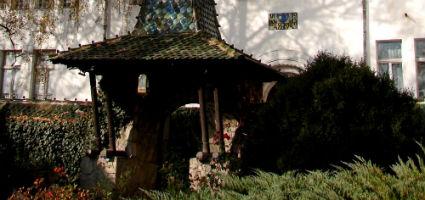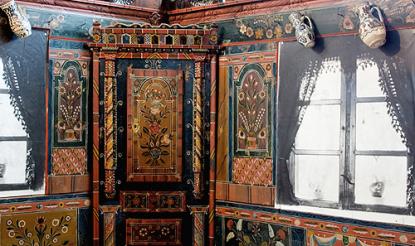2024. April 20. Saturday
Szekler National Museum - Sfîntu Gheorghe
 |
Address: 520055, Sfîntu Gheorghe str. Kós Károly 10. / Kós Károly u. 10.
Phone number: (267) 312-442
E-mail: office.sznm@gmail.com
Opening hours: Temporarily closed.
|
The exhibition has closed for visitors.
2000.05.01. - 2019.09.30.
Museum tickets, service costs:
|
Individual ticket for adults
|
10 HUF
|
/ capita
|
|
Individual ticket for students
|
5 HUF
|
/ capita
|
|
Group ticket for students
(10-30 people)
|
50 HUF
|
/ group
|
|
Individual ticket for children
(over 7 years of ages)
|
5 HUF
|
/ capita
|
|
Individual ticket for pensioners
|
5 HUF
|
/ capita
|
|
Ticket for families
(2 adults + 1-5 children)
|
20 HUF
|
/ family
|
|
Guide
|
20 HUF
|
|
|
Video
|
20 HUF
|
The exhibition focuses on showing crafts present in Székelyland. Just like everywhere where Hungarian people live, the distinguishing grand-region division developed in Székelyland. Each village specialized on a craft according to the raw material available in the region. This specialization made it possible for the acquisition of crafts perfectly. Csomakőrös was known from the sieve weavers, Gelence from the shingle makers and plank cutters, Haraly from tubs, Oltszem from wheels, Magyarhermány from carpenter made chests, Vargyas from the furniture painters and lime-burners, Korond, Csíkmadaras, Bodok from potters, Csíkszentkirály, Mikóújfalu, Polyán from hewers. People living in the region knew which product where to buy.

The objective of the exhibition is to show the division of labour in the region. We show example of corrugation of Bardóci, sieve from Kőrösi, a shingle from Gelence, cooper works from Haralyi, wheels from Oltszemi, and chests from Magyarhermány, pottery from Bodoki, Pávai, Magyarhermány and Kézdivásárhely. We also show the tools used by the craftsmen.
Spectacles are two scale models on the second floor showing the architecture of Székelyland, as well as three interiors and a painted cassette ceiling. The showing on the third floor is a little more eclectic. There are tools of leather works and ready made products, as well as traditions related to important turning point is human life.
One of the most spectacular part is the ethnography open-air showing.

The objective of the exhibition is to show the division of labour in the region. We show example of corrugation of Bardóci, sieve from Kőrösi, a shingle from Gelence, cooper works from Haralyi, wheels from Oltszemi, and chests from Magyarhermány, pottery from Bodoki, Pávai, Magyarhermány and Kézdivásárhely. We also show the tools used by the craftsmen.
Spectacles are two scale models on the second floor showing the architecture of Székelyland, as well as three interiors and a painted cassette ceiling. The showing on the third floor is a little more eclectic. There are tools of leather works and ready made products, as well as traditions related to important turning point is human life.
One of the most spectacular part is the ethnography open-air showing.
